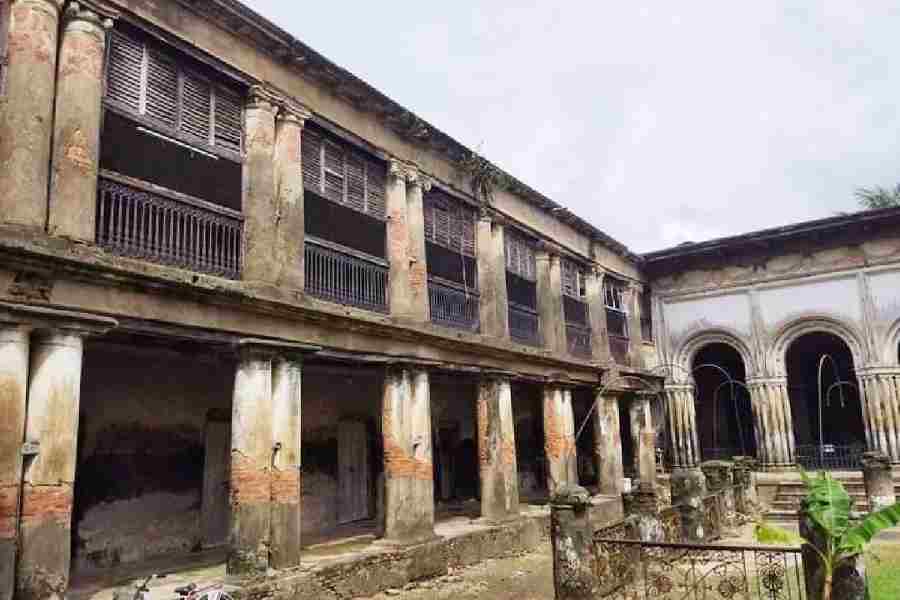The Hooghly district administration on Sunday installed a plaque at the Sukharia zamindar palace in Somra Bazar in memory of filmmaker Mrinal Sen on his birth centenary.
From September 1980, Sen visited the impoverished Hooghly village and stayed at the palace, Radha Kunja, for two months to shoot his film Akaler Sandhane(In Search of Famine).
Sen is regarded as part of the triumvirate of Indian greats, along with Satyajit Ray and Ritwik Ghatak, who ushered in New Wave cinema.
The district administration, with the support of Balagarh Bijoy Krishna Mahavidyalaya and the Biswas family (successors of the erstwhile zamindar), put up a large plaque with the detailed history of the building and the film to enhance interest in the spot and the younger generations’ awareness.
Akaler Sandhane depicted a film crew arriving at a village to make a film on the ghastly manmade Bengal famine of 1943 — caused by the British imperial government’s policies during World War II under Prime Minister Winston Churchill — that resulted in the death of at least 38 lakh people from starvation, diseases aggravated by malnutrition, displacement and lack of healthcare.

The Sukharia zamindar palace in Somra Bazar
Some of Indian cinema’s arthouse icons, such as Radhamohan Bhattacharya, Smita Patil, Dhritiman Chatterjee, Dipankar De, and Rajen Tarafdar were in the film. The film won the National Film Awards in 1981 for best feature film, best direction, best screenplay and best editing. At the 31st Berlinale, it won the Silver Bear (Special Jury Prize). The initiative to put up the plaque was taken by the National Service Scheme unit of the college last year at the commencement of the birth centenary celebrations of Sen. The district administration recently gave it the go-ahead.
Partha Chattopadhyay, a teacher who is in charge of the NSS unit, said:“Radha Kunja itself has great historical significance. The visit of Mrinal Sen enhanced it.”
“But unfortunately, the building is in a dilapidated state. We have appealed for the preservation of the building and the legacy of Sen,” he said.
Residents said Radha Kunja was originally built by the Mitra Mustafi family of Sukharia. Eventually, the estate was inherited by Bhujendranath Biswas, the son of a female member of the family, in the absence of male successors.
Biswas was an admirer of arts and culture.
Speaking on the occasion on Sunday, Chattopadhyay said: “Sen had a long association with the building.”
“Even after making the film, he visited the building many times. People here speak about him and his work even after four decades. Sen’s bond with the place is made somewhat immortal through this plaque,” he said.
A book, titled Hooghly Zilla O Mrinal Sen (The Hooghly District and Mrinal Sen) and authored by Chattopadhyay, was released.
Unveiling the plaque, Balagarh block development officer Niladri Sarkar said it was a tribute to the great filmmaker.
“We have other plans for this spot. We would talk to the owners of the building for the promotion of tourism,” he said.
Bhaskar Biswas, a member of the erstwhile zamindar family, said they were honoured to have the plaque unveiled there.
